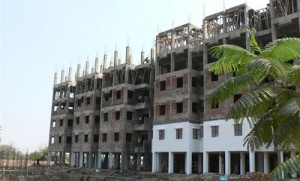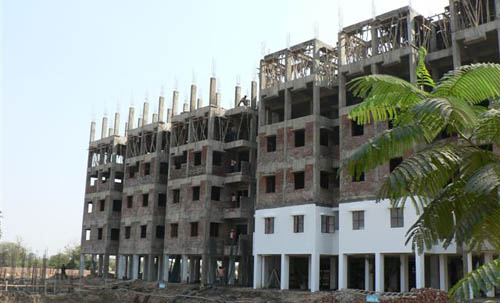By: Ravi Sinha
 While everybody, including the Finance Minister seems to be focussing on the affordable housing, the definition of the real estate at the bottom of the pyramid seems to be changing. After all, the focus of the real estate at the bottom of the pyramid should have aimed to the EWS (Economic Weaker Section) housing schemes where various state governments are also promising incentive to the realtors. Still, there are very few takers for this.
While everybody, including the Finance Minister seems to be focussing on the affordable housing, the definition of the real estate at the bottom of the pyramid seems to be changing. After all, the focus of the real estate at the bottom of the pyramid should have aimed to the EWS (Economic Weaker Section) housing schemes where various state governments are also promising incentive to the realtors. Still, there are very few takers for this.
Unlike the general perception, fact of the matter is that there is a strong demand in this segment especially in the metros where the immigration is more prominent. The immigration is by virtue of reason of poverty alleviation that the migrant workers come to the metros. Evidently, this migration is taking place from local village to local city. Therefore, the EWS housing demand is across the country from metros to cities.
Largely, this segment has been catered to by the un-organised and unregulated developers. Till recent past, this domain solely was kept with the Govt. itself. In the early 2000s, only Haryana State took the initiative of licensing housing for EWS in Private sector in Haryana, wherein a 25% component was built-in as mandatory licensing condition. Therefore, licensed developers have been catering to this segment more by regulation than by business initiative.
This model is being adopted across the country by other states but not very aggressively for the reason that states want to house their citizens and not migrants under this category and such citizens with purchasing capacity are more in industrially active states.
Amar Kapoor, Director, Urban Heights believes it is a very viable segment in terms of profit making but unviable or rather longer process for brand visibility by just building projects focusing on EWS housing. His wish list is tax holidays and speedy clearance of projects to make this segment more lucrative. “Demand has to be the key driver for making such projects feasible. However if governments frees up large tracts of land which are currently under No Development Zones for EWS, it may be tempting for developers as some of them are in lucrative locations. I also don’t see it as a non-metro phenomenon in India. If you see globally all big cities such as NYC, London etc. they have EWS housing outside the main city where the land is cheaper. But the phenomenon has not yet taken place in India due to lack of infrastructure and connectivity,” he says.
Urban planning experts feel the category of EWS needs to be defined clearly. As housing is a State subject, the policy of housing is designed for the subjects (States’ citizen) of the State and not for regularizing illegal immigration. Sunil Dahiya, Managing Director of Vigneshwara Developers who is venturing into EWS housing says, “As illegal immigration, is perceived as a burden on the social, political and infrastructure fabric of the city. Therefore, the policy needs to recognize the exact status of the EWS category viz; should it be by bonafide residency (States’ citizenship) or economic status. If it is recognized by status of bonafide residency/states citizenship then most of the migrants will be automatically excluded. If it is by status of economic standing, most of the slum dewellers will qualify and create a political imbalance as voter recognition will be mandatory.”
Atul Modak, Head of Kohinoor City says the cost of land in metros is so high that it makes EWS housing unviable for realtors. That is why housing for EWS is comparatively easier in non-metros. However, if the government can provide more FSI for EWS housing, it need not remain a non-metro phenomenon.
“There certainly is a pressing need for providing affordable housing for this segment. The question remains as to who will do it. Ideally, it should be a strong government initiative roping in the private sector, a PPP whereby the government encourages realtors to construct homes for the EWS making it viable for them by giving sops. While the government has the power to attract more and more realtors to encourage them to cater to this section too, the realtors have the capacity to construct houses to meet this demand. If this happens, the property market at the bottom of the pyramid will also pick up. Higher volumes in this segment will undoubtedly make it viable for realtors too,” Modak says.
Ashwani Prakash, Executive Director of Paramount Group sums it us with the learning curve of realtors post slowdown to focus on EWS housing. “One of the reasons the sector could cope up with slowdown was the shift of focus on affordable housing. It was during this period that we realized that there is more robust business at the bottom of the pyramid. Hence, now onwards you will find more EWS launches, not because of mandatory provisions but out of the business strategy,” he says.





